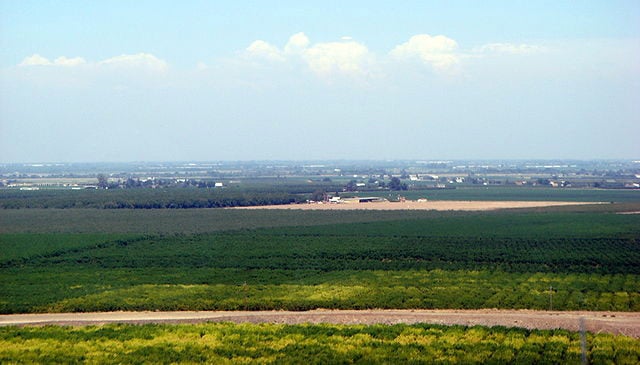I keep hearing or reading where San Joaquin Valley, California business owners have paid billions of dollars over the years to reduce their contribution to air pollution by as much as 80 percent.
Directly related to this businesses, since the 1980s, are credited by the San Joaquin Valley Air Pollution Control District (SJVAPCD or Valley Air District) governing board as having invested $40 billion to help clean Valley air, according to Mark Grossi in the Merced Sun-Star in: “SJ Valley air board: Key ozone standard met.”
Now, I know these businesses didn’t just one day decide they would hand over that much money to regulatory authorities out of the kindness of their collective heart. Think rules compliance.
As it has to do with this, in excess of 500 rules approved by the district have been in effect to help mitigate air pollution in the Valley, according to Grossi.
Some examples of the kinds of rules being talked about here.
This is from the Valley Air District’s 2012-2013 edition of the Annual “Report To The Community.”
- Organic Material Composting Operations (Rule 4566)
- Internal Combustion Engines (Rule 4702)
- Polyester Resin Operations (Rule 4684)
- Exemptions (Rule 2020)
- Crude Oil Production Sumps (Rule 4402)
- Solid Fuel Fired Boilers, Steam Generators and Process Heaters (Rule 4352)
- Wastewater Separators (Rule 4625)
- Polystyrene, Polyethylene, and Polypropylene Products Manufacturing (Rule 4682)
For more on this, see: “Report To The Community: 2012-13 Edition,” San Joaquin Valley Air Pollution Control District, pp. 27-28, http://www.valleyair.org/2012-13AnnualReport.pdf.
Additionally, the Valley Air District in the “Report” stressed: “Tough, innovative rules such as the District’s rules for indirect source review, residential fireplaces, glass manufacturing and agricultural burning have set benchmarks for California and the nation.”
Meanwhile, an annual $29 million penalty has been assessed against Valley motorists and business owners alike since 2010 for not meeting an old federal standard for one-hour ozone originally established in 1979 and abolished in 2005. Motorists are on the hook for about $25 million of that yearly which is collected through an extra $12 fee that is tacked onto vehicle registrations. The business owners in question are responsible for the rest.
“In a historic vote, Valley air-quality leaders on Thursday [Nov. 14, 2013] asked federal officials to approve the region’s attainment of the one-hour ozone standard,” Grossi in the aforementioned article noted, and added: “District executive director Seyed Sadredin said he would push for an EPA [U.S. Environmental Protection Agency] decision within a year.” The SJVAPCD is seeking a pardon from the EPA to get this charge removed, apparently.
An 80 percent reduction in Valley air pollution levels overall sounds impressive. And, not a single exceedance of the federal one-hour standard of 125 parts per billion of ozone anywhere in the Valley this year to boot? Awesome! But the more stringent – federal and state – eight-hour ozone standards – ones that are more protective of human health – have yet to be met and meeting these standards seems years away at best, decades away at worst.
Add to this that Valley fine particulate matter pollution also persists.
And what this means is the Valley is not out of the air-pollution woods just yet and what that sounds like is in getting that additional 20 percent air-pollution reduction is not going to be easy.
And that, in a nutshell, is the good and bad of air-pollution reduction in the San Joaquin Valley.
– Alan Kandel
